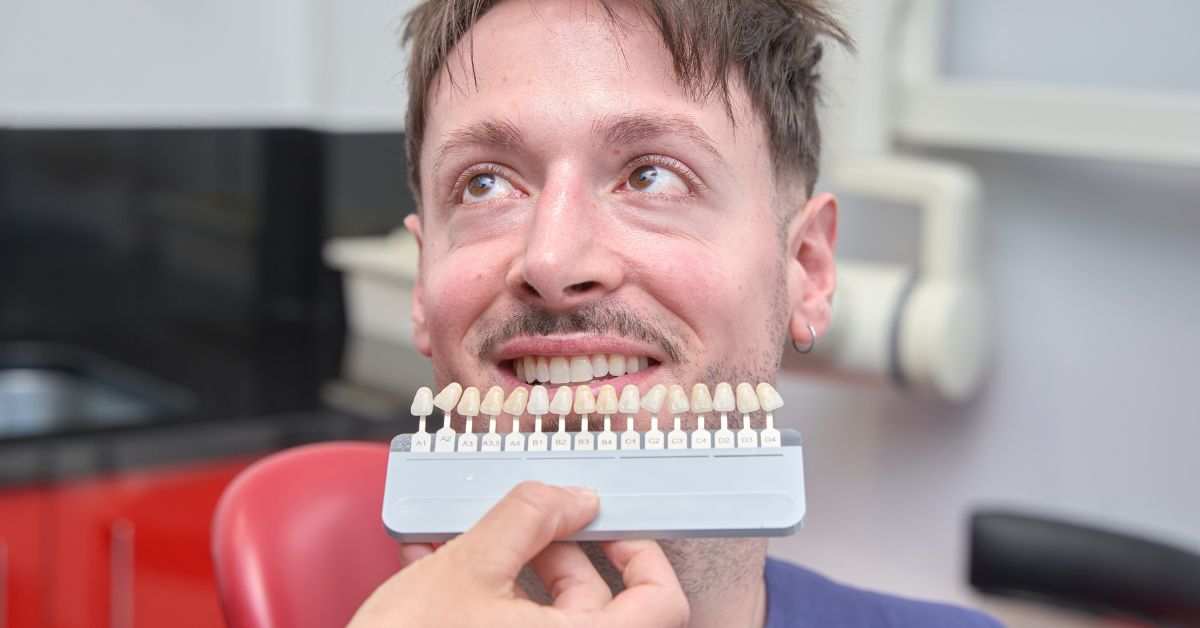Dental bridges are a reliable solution for replacing missing teeth, both functionally and aesthetically. But if you’re asking, “what do dental bridges look like?” you’re not alone. Many people worry that a bridge might look fake or out of place. The truth? Modern dental bridges are designed to closely mimic natural teeth in color, shape, and size—making them practically indistinguishable. In this comprehensive article, we’ll explore what they really look like, how they’re crafted, and how they fit seamlessly into your smile.
Types of Dental Bridges and Their Appearance
Traditional Dental Bridges
These are the most common type and consist of a false tooth (or teeth) anchored between two crowns placed over healthy teeth. Visually, they resemble your natural teeth, with the bridge portion filling the gap seamlessly. The crowns on each end are shaped like your real teeth, making it almost impossible to detect the prosthetic.
Cantilever Dental Bridges
Used when there’s only one anchor tooth. The structure is less balanced, and while it still looks natural from the outside, it might feel different. These are usually placed in the back where they’re less visible.
Maryland Bonded Bridges
These use metal or porcelain “wings” bonded to adjacent teeth. They’re typically used for front teeth and appear very natural. However, the wings may reflect light differently, making them slightly noticeable in bright lighting.
Implant-Supported Bridges
They rest on dental implants rather than natural teeth. Visually, they are the most natural-looking, especially for larger gaps. Their fit and appearance rival your original teeth.
What Materials Are Dental Bridges Made Of and How They Affect Appearance
Porcelain-Fused-to-Metal (PFM)
A durable option where porcelain covers a metal core. The porcelain mimics the tooth color, but sometimes the metal base can show near the gumline.
All-Porcelain or Ceramic
Highly aesthetic and best for front teeth. They reflect light similarly to natural teeth and are ideal for people with metal allergies or those seeking a metal-free solution.
Zirconia or Metal-Free
Known for strength and beauty, zirconia bridges offer translucency like enamel, making them a top choice for front and back teeth alike.
How Dental Bridges Match Your Natural Teeth
Color Matching
Dentists use a shade guide to ensure the bridge color blends with your teeth. This ensures a natural appearance in both indoor and outdoor light.
Shape, Size & Alignment
Each bridge is sculpted to replicate the contour of your original teeth. This includes bite alignment and height for a seamless appearance.
Customization Techniques
3D imaging and digital scans allow technicians to tailor each bridge precisely to your dental arch and facial symmetry.
Before and After – Visual Transformation with Dental Bridges
Patients who get dental bridges often experience a dramatic change in their smile. Missing teeth can lead to sunken cheeks and lowered confidence. After bridge placement:
-
Smiles appear fuller
-
The jawline is more defined
-
Facial symmetry is restored
-
The bridge fills gaps without drawing attention
Photos from dental clinics often show a barely noticeable change—except that the gap is gone.
Pros and Cons of the Aesthetic Appeal of Dental Bridges
Pros:
-
Natural-looking finish
-
Smooth gumline transition
-
Durable, long-lasting materials
-
Boosts confidence
Cons:
-
Older bridges may discolor
-
Gum recession can expose metal base
-
May need replacing after a decade
Can Dental Bridges Be Spotted by Others?
In everyday interactions, dental bridges are hard to detect. They’re designed to be symmetrical and blend naturally. Unless someone examines your mouth closely or is a dental professional, they likely won’t notice. A well-maintained bridge can look just like your original teeth for years.
Expert Tip – How to Keep Dental Bridges Looking Great Over Time
-
Brush with non-abrasive fluoride toothpaste
-
Use floss threaders to clean underneath the bridge
-
Visit your dentist every 6 months for cleaning
-
Avoid highly pigmented food and drinks like coffee and red wine
With proper care, your bridge can retain its aesthetic value for 10–15 years or more.
FAQs
Q1. What’s the difference between a dental crown and a bridge?
A crown covers one tooth, while a bridge replaces one or more missing teeth by anchoring to adjacent teeth.
Q2. Can I choose the color of my dental bridge?
Yes. Your dentist will match the bridge color to your natural teeth for a seamless look.
Q3. Do dental bridges feel bulky in the mouth?
Initially, it may feel different, but most patients adapt quickly. Custom bridges are designed for comfort and a natural fit.
Q4. Are dental bridges noticeable when smiling?
No, when well-crafted, they blend naturally and are virtually invisible to others.
Q5. How long do dental bridges retain their appearance?
With proper care, bridges can look natural for over a decade before needing replacement or adjustment.
Conclusion
So, what do dental bridges look like? In short—they look like your natural teeth. Thanks to advancements in dental materials and customization, modern bridges are both functional and visually appealing. Whether you’re replacing one tooth or several, a dental bridge can restore your smile’s beauty and symmetry. If done correctly and maintained well, no one will know you’re wearing one.
